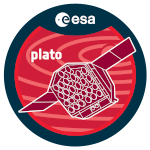It is known that for a star like the Sun, rotation and magnetic activity evolve with age. Indeed, in 1972, Skumanich showed that on the main sequence, a solar-like star spins down and becomes less magnetically active with age. Such evolution opened the possibility to use rotation and magnetic activity as stellar clocks, known as gyrochronology for the former and magneto chronology for the latter. While these relations have been based on spectroscopic indexes such as CaHK and spectropolarimetric observations from surveys, the sample used is still small with up to a few thousands of stars.
The recent catalog of rotation periods and photometric magnetic activity proxies for more than 55,000 stars observed by the Kepler mission is a goldmine to study the evolution of magnetic activity of solar-like stars. Using stellar models that include angular momentum evolution, we computed ages for the full sample of stars. We investigated relations between Sph, a photometric magnetic activity index, stellar ages as well as other stellar fundamental parameters (such as luminosity, metallicity, rotation periods). Such analysis is based on two different methods: a Bayesian fit of analytical relations and a Random Forest (RF) regressor. While our results depend on the stellar models used, the methodologies can be performed with other stellar models. In this talk, I will show the promising results found to predict ages using these methods with up to 5-6% median differences between the predictions and the stellar models. In particular, we show that adding the magnetic activity proxy, Sph, as input improves the age prediction. Our results are now being implemented in the PLATO stellar analysis system.
|
|
|
Abstracts > sorted by Authors > Bonnano AlfioEvolution of magnetic activity of solar-like stars with age: deriving magneto-(gyro-)chronology relations for PLATO
1 : Instituto de Astrofisica de Canarias
(IAC)
Calle Vía Láctea, s/n, 38205 San Cristóbal de La Laguna, Santa Cruz de Tenerife -
Spain
2 : Universidad de La Laguna
(ULL)
S/C de Tenerife Spain -
Spain
|

 PDF version
PDF version
